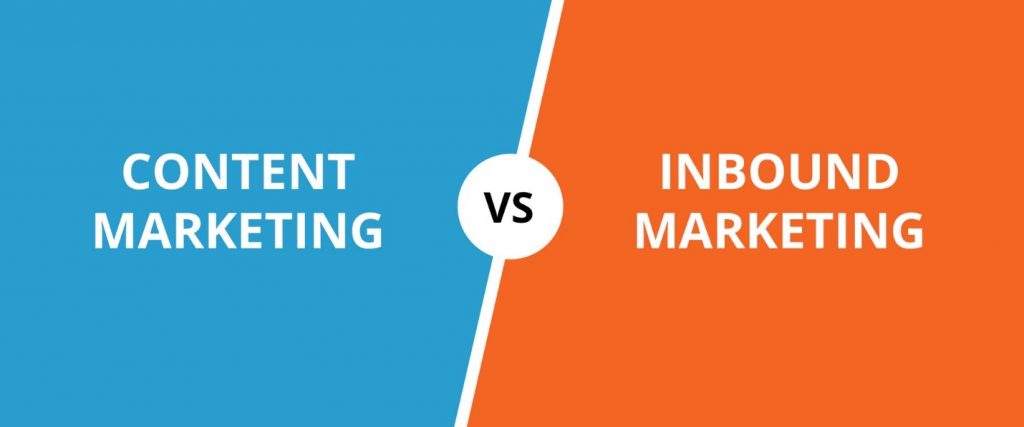Excuse the cliche, but content is king. And while you must have read and heard this phrase repeatedly over the last few years, you need to know what kind of content marketing strategy works for you. And this includes understanding inbound marketing as well.

Both these strategies have very distinctive differences which can impact your brand by miles. Don’t know what those differences are? Let’s find out what they are and how each can be suitable for your brand.
Content Marketing:
The term content marketing is a way marketers and brands describe the content they develop to market themselves to customers. The phrase initially surfaced in early 2001, and has been evolving since then to adapt to global marketing trends.
If you think about it, content marketing strategies have always existed in the world of marketing, but it has recently become a popular phrase because of mainstream advertising. Take this first video ad, for example. A smart, precise 10 second video which would’ve run successfully in in-stream or pre-roll ads on YouTube, it uses content very concisely to communicate its message. This is the type of content marketing which marketers covet and people admire.
Video link: https://www.youtube.com/watch?v=8JenAyMmZ68E
The Bulova advertisement was aired in 1941, and since then, video and content marketing have come a long way. Now, the term has become common practice and is coined almost in every agency in the world.
Content marketing usually involves creating marketing material that a brand’s target audience or demographic can relate to, and as a result, will convert as a customer for said brand. Marketers usually try to affiliate the content they’re creating with the brand in one way or the other, even if it doesn’t include a particular call to action. Nowadays, with digital advertising on the rise, content marketing can include anything: from a web series on YouTube or Facebook to an engaging post or contest on Instagram. Content is everything, and the way you decide to showcase it to your audience can be a great influencer on how they see, pursue, and build a relationship with your brand.
Inbound Marketing:
Just as content marketing, inbound marketing has also existed in the advertising world for ages. But it has only become a mainstream way of promotion in the past 5 or 10 years.
Inbound marketing is used when you don’t want to bombard your audience with repetitive ads or become intrusive in pursuing them. The tactics involved in inbound help you approach your customers or audiences in such a way that you can send your message across without ruining your reputation with repeated ads.
Thus, inbound marketing follows the “three right rules” – right content delivered to the right customer at the right time. The strategies involved in inbound can vary from email marketing to newsletter subscriptions or even discount offers and broadcast messages. The whole premise of inbound is to attract people in toward the brand, rather than pushing your message out to generate conversions. In other words, this kind of strategy focuses on making content available for customers who will then decide to pursue it or not.
The Difference:
Reading the above descriptions for each type of marketing strategy, you’ve probably understood what content and inbound marketing are all about. However, the clear difference is that content marketing is a holistic term that encompasses all kind of marketing collateral, including videos, copywriting, user guides, whitepapers, blogs, website content, and even dialogues and scripts. Inbound marketing, however, focuses on a rather niche approach of calling in the customer through offers, discounts, and even websites and newsletters, to compel them to take action for your brand.
Content marketing focuses on building profitable relationships and leaving an effective impact within your audience. Inbound marketing focuses on inspiring those customers to take an action.
Which One Should You Choose?
Honestly, there’s no single answer to this question. Content and inbound marketing are two sides of the same coin, and are crucial for every brand. While both of them follow a different process, the end result is the same: Getting your customer to act on your brand’s call to action. As each customer thinks differently, the purchase process they follow will also be different and unique, and to reach them through a unified way you can create communication based on the platform you’re using.
Whether you’re an ecommerce website or an education institute, a restaurant, or even a digital marketing agency, you’ll need to create a blend of marketing strategies involving both content and inbound ideas which can help you create a funnel which can then guide your customer with a series of steps that can attract and subsequently convert your target audience into successful customers.
